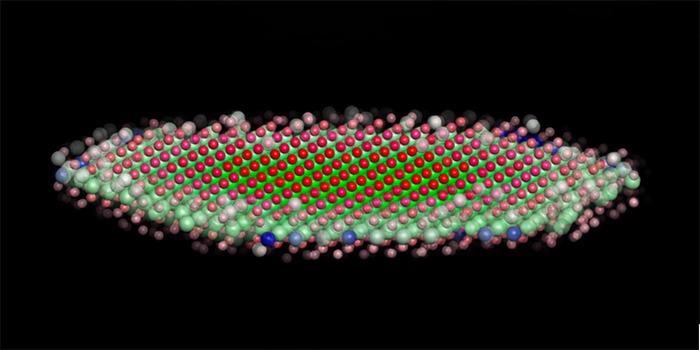In the past few years, a research group with expertise in electron microscopy and catalysis has been involved in identifying the three-dimensional arrangement of atoms in nanoparticle catalysts in chemical processes. The research has merged experimental measurements with mathematical modeling.

Image Credit: Technical University of Denmark.
The outcome obtained is a new method that enables identifying and tracking the individual atoms in the nanoparticle, even when they are in vibration and under movement.
So far, atoms present in the nanoparticles were predicted to be static during observations. However, the analysis of 3D atomic-scale images by the researchers showed that the original prediction is not enough. Rather, they uncovered the dynamic behavior of the atoms by employing a new analytical method.
The researchers selected a popular catalytic nanoparticle material called molybdenum disulfide. The material's atomic structure is widely known and thus proved to be a good platform for explaining the 3D atomic-resolved images collected at the Lawrence Berkeley National Laboratory. The special TEAM 0.5 electron microscope used for this purpose provides the highest picometer-scale resolution in the world.
The new technique has been explained and reported in the journal Nature Communications.
New Model Ensures Identification of Atoms
The mathematical model enables identifying the individual atoms in the nanoparticle, even when they are moving. The model calculates both the intensity and width of the atoms in the images.
Until now, determining which atom we are observing has been challenging due to blurring caused by the oscillations of the atoms. However, by factoring in the oscillations, we can more accurately identify, for example, the location of individual sulfur or molybdenum atoms.
Stig Helveg, Professor of Physics, Technical University of Denmark
Furthermore, the new model enables correcting changes to the nanoparticles in the form of oscillations obtained from the illumination of energetic electrons in the electron microscope. This will enable researchers to focus on the chemical information hidden in the image one atom at a time. This is the main idea of the research.
Next Step in Measuring Function
The scientists expect that the new successful model will be employed by other researchers within their area of research. The model will also offer a platform for the work of Stig Helveg’s new basic research center at the Technical University of Denmark (DTU), VISION.
The objective will be to move one step beyond by integrating the atomic-resolved images with measurements of the catalytic characteristics of the nanoparticles. The insights gained from the study will support the development of nanoparticles for catalytic processes as part of the shift to sustainable energy.
The international research group behind the new imaging model included Fu-Rong Chen from City University Hong Kong, Dirk van Dyck from the University of Antwerp, Christian Kisielowski, and Bastian Barton from Lawrence Berkeley National Laboratory, Lars P. Hansen from Haldor Topsoe A/S, and Stig Helveg from DTU.
Journal Reference:
Chen, F.-R., et al. (2021) Probing atom dynamics of excited Co-Mo-S nanocrystals in 3D. Nature Communications. doi.org/10.1038/s41467-021-24857-4.